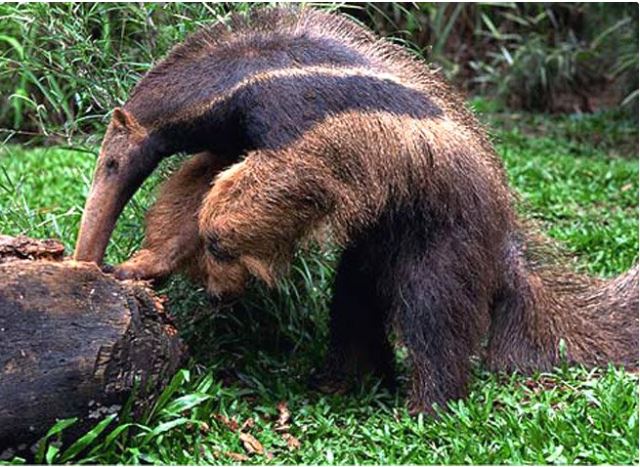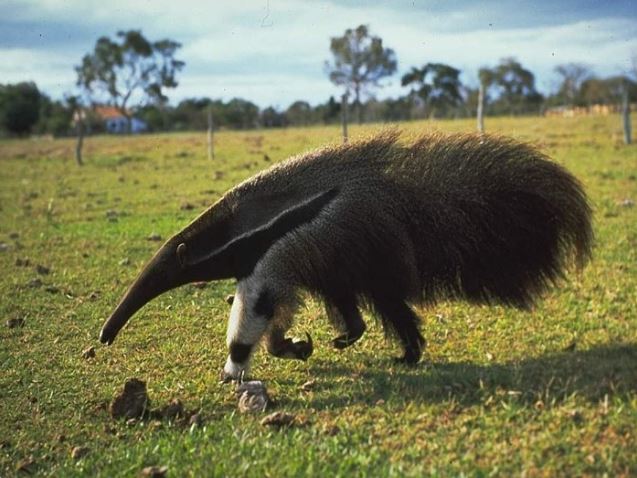Introduction to the Fascinating World of Anteaters
Among the animal kingdom’s most enigmatic and specialized insectivores, anteaters stand out as evolutionary marvels. Often misunderstood or overlooked, these creatures harbor a world of secrets beneath their distinctive appearance and behavior. Native to Central and South America, anteaters have evolved to thrive on one of the most challenging diets in the wild: ants and termites. Yet, their feeding methods, anatomy, digestion, sensory perception, and reproduction make them some of nature’s most extraordinary animals.
Unique Anatomy: A Toothless Design With a Purpose
Unlike most mammals, anteaters do not have teeth. This surprising characteristic is not a disadvantage but rather an adaptive feature that perfectly suits their dietary needs. Instead of chewing, anteaters rely on their extraordinarily long, sticky tongues, which can extend up to 60 centimeters (nearly 2 feet)—longer than the average human forearm.
The tongue is narrow, covered with tiny backward-pointing spines, and coated in sticky saliva, allowing anteaters to gather thousands of ants or termites in mere seconds. Their long snouts house powerful muscles that facilitate rapid tongue flicking, enabling them to flick their tongues up to 150–160 times per minute.

Efficient Feeding Without Destruction
What sets anteaters apart is their non-destructive foraging behavior. Rather than tearing apart anthills or termite mounds, they make use of small holes on the tops of these nests to extract insects. This selective and gentle feeding strategy allows the insect colonies to survive and recover, ensuring a sustainable food source for future visits.
Anteaters must consume their prey swiftly due to the aggressive nature of ants, particularly soldier ants. By minimizing time spent at each colony, they avoid prolonged exposure to painful bites and stings.
On average, an adult anteater can consume up to 30,000 ants and termites per day, making their feeding technique not only impressive but also highly effective and essential for their survival.
A Digestive System Built for Insect Consumption
With no teeth to grind food, anteaters rely heavily on their stomachs to break down the insects they consume. Their stomachs function similarly to a bird’s gizzard, mechanically grinding the insects with the help of swallowed sand and debris.
Remarkably, anteaters produce formic acid in their stomachs rather than the hydrochloric acid typical in most mammals. This adaptation aligns with their diet, as formic acid is the same substance secreted by many ants. This highly specialized digestive system enables efficient nutrient absorption from insect protein.
Extraordinary Sense of Smell
Though their vision is poor, anteaters are equipped with a sense of smell 40 times more sensitive than that of humans. This enhanced olfactory ability allows them to detect ant and termite nests even when they are buried beneath soil or hidden within rotting logs. The anteater’s elongated snout, aside from supporting their feeding tongue, acts as a powerful scent detector, guiding them unerringly to their insect prey.
Defensive Adaptations and Physical Strength

Despite appearing gentle and awkward, anteaters are not defenseless. They possess formidable claws up to 10 centimeters long, primarily used for ripping into nests but also as weapons against predators such as jaguars and pumas.
When threatened, an anteater will rear up on its hind legs, using its muscular tail for balance while striking with its front claws. These claws are strong enough to injure or kill much larger animals. Their primary strategy, however, remains avoidance—using camouflage and slow, silent movement to stay undetected in the wild.
Thermal Regulation and Sleep Patterns
Anteaters exhibit lower-than-average body temperatures, maintaining an internal temperature of approximately 32.7°C (90.9°F). This is significantly below the average for most placental mammals and is an adaptation that helps reduce energy expenditure—a necessary trait for an animal that consumes low-calorie insects.
These animals are also known for their extended sleep cycles, sleeping an average of 15 hours per day. During rest, they tuck their heads under their bushy tails to conserve body heat and remain hidden from predators.
Reproduction and Parental Care
The gestation period of an anteater lasts approximately 190 days, after which a single offspring is born. The mother carries her baby on her back for up to one year, during which the young anteater is rarely left alone. This extended period of close contact allows the young to learn essential survival behaviors while being protected.
After the first year, the juvenile becomes increasingly independent but typically remains with the mother for up to two years, until she becomes pregnant again. This long developmental phase ensures that the offspring is well-prepared to navigate the wild.
Longevity and Conservation Status
In the wild, anteaters can live up to 15 years, but in captivity, where threats are minimal and food is abundant, they can live as long as 25 years. Despite their resilience, anteaters are vulnerable to habitat loss, roadkill, and hunting. Their numbers are declining in several regions, making conservation efforts critical.
Organizations focused on wildlife protection are working to preserve their natural habitats and reduce human-animal conflict. Education about the ecological importance of anteaters—as natural pest controllers—can play a key role in their long-term survival.
Ecological Role: Nature’s Pest Controllers
Anteaters serve a vital role in controlling insect populations, particularly ants and termites, which can become agricultural pests if unchecked. By consuming tens of thousands of these insects daily, anteaters help maintain a balanced ecosystem. Their presence indirectly supports plant life by preventing overpopulation of insects that destroy vegetation and tree bark.
As such, protecting anteaters means preserving not just a unique species, but also the delicate ecological balance in tropical and subtropical environments.
Conclusion: Awe-Inspiring Survivors of Evolution
Anteaters represent a masterclass in evolutionary specialization. From their toothless mouths and powerful tongues to their unique stomach chemistry and acute sense of smell, every part of their anatomy is finely tuned for survival in a niche that few other animals could endure.
Their gentle demeanor, complex behavior, and essential ecological contributions make anteaters not only fascinating but indispensable to the ecosystems they inhabit. As we continue to uncover more about these mysterious creatures, one thing becomes clear: anteaters are among the most uniquely adapted and ecologically valuable mammals on Earth.
Keywords: Anteaters, anteater tongue, anteater facts, insectivores, animal adaptations, formic acid digestion, anteater sleep, anteater reproduction, anteater diet, anteater habitat, giant anteater, nature’s pest controller, anteater anatomy.